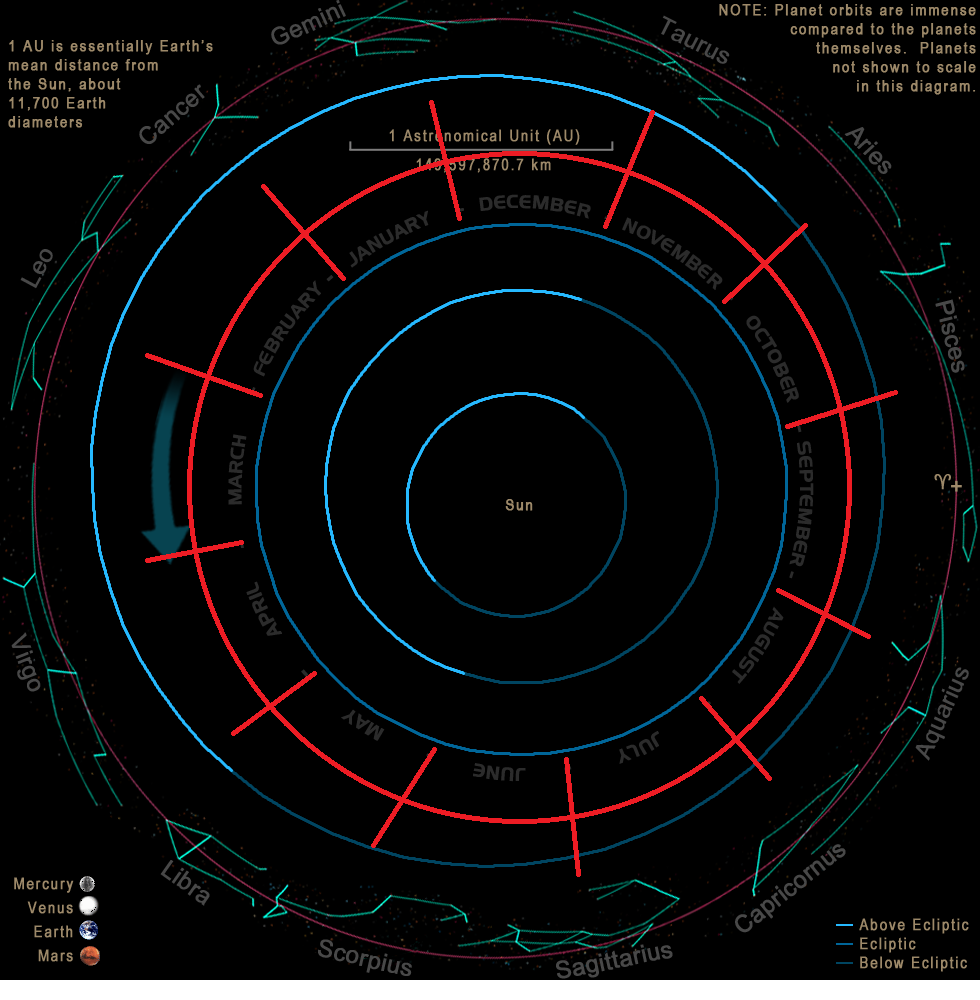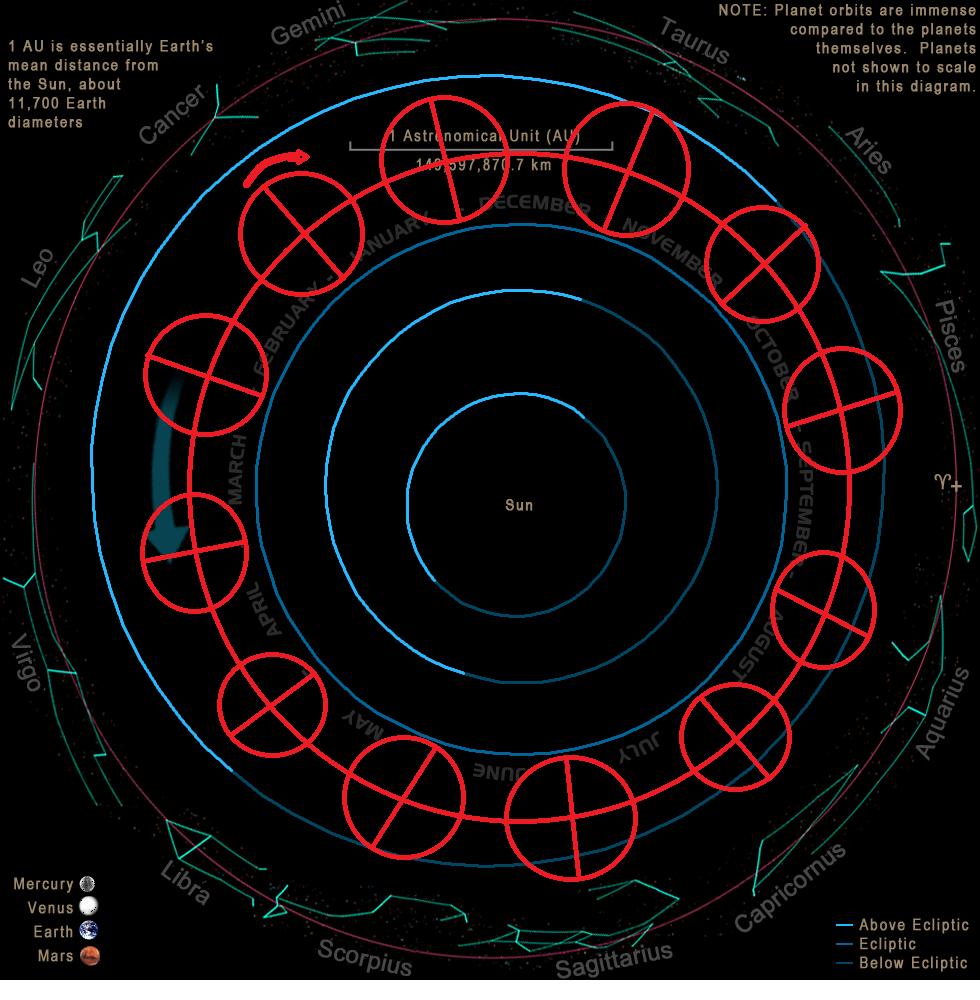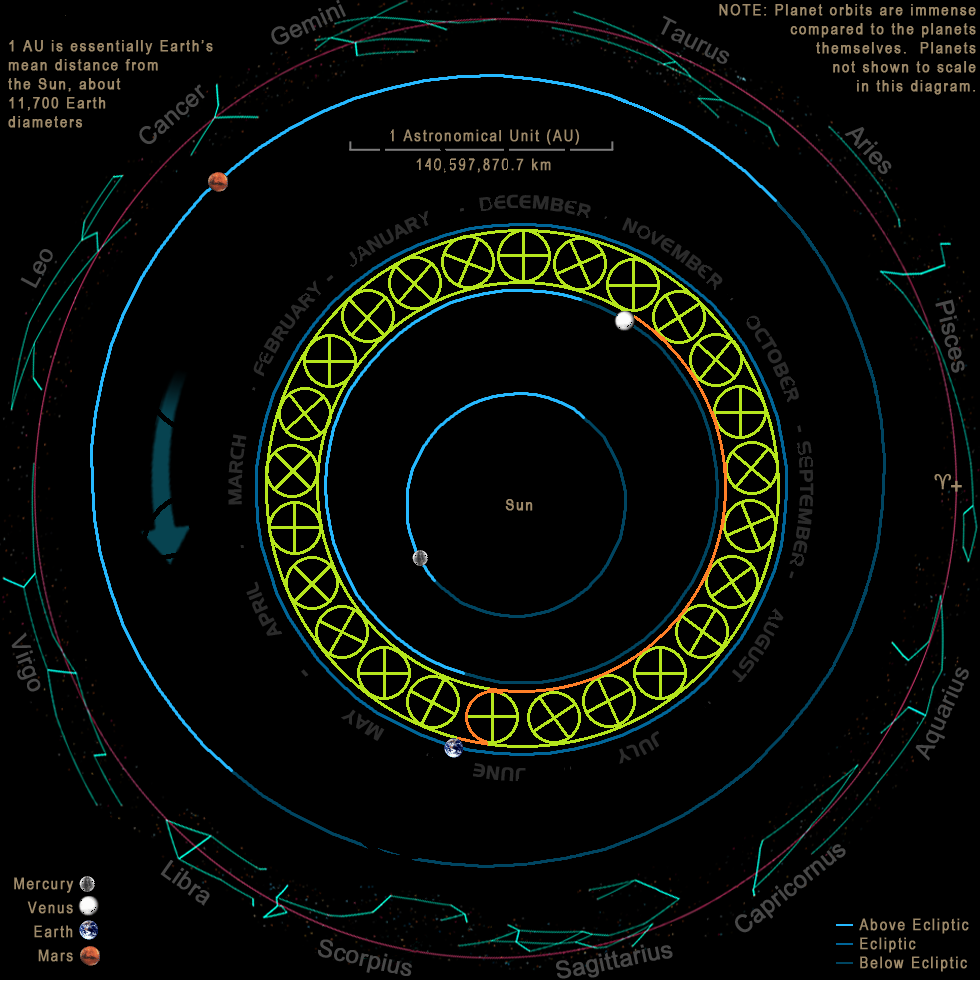New Mars Forums
You are not logged in.
- Topics: Active | Unanswered
Announcement
#1 2016-08-23 20:04:47
- Tom Kalbfus
- Banned
- Registered: 2006-08-16
- Posts: 4,401
solar express futuristic train travel concept
http://www.forbes.com/sites/kristintabl … 8e6eb148c1
I read this article, But I still don't get how this concept would work. Mars in 2 days? Mars is constantly changing its position relative to Earth. The article doesn't explain how you could have a ski lift like operation between Mars and Earth. A payload would still need to accelerate and decelerate to get to Mars from Earth. A "ski lift" like operation implies a continuous loop, how do you have a continuous loop between two objects that are not in fixed positions relative to each other?
Offline
Like button can go here
#2 2016-08-23 20:52:16
Re: solar express futuristic train travel concept
The author of the article is "Forbes staff." It sounds like she has no science training, so she has no idea what she's talking about. You can't harvest ice from passing comets and asteroids if you're traveling at 3,000 km/sec! The description of the transportation system lack all technical details or even technical language.
It sounds like this same person is proposing a system to get you to New York from Dubai in 22 minutes (this is another article, referred to underneath the Mars article). That's about half way around the world. At low earth orbit speeds, it would take about 45 minutes to go half way around the world, so this proposes going across the globe at twice the speed of low Earth orbit. A speed like that would send you to the moon, and at a really fast clip. That strikes me as utter nonsense.
Offline
Like button can go here
#3 2016-08-24 08:53:18
- Tom Kalbfus
- Banned
- Registered: 2006-08-16
- Posts: 4,401
Re: solar express futuristic train travel concept
Just fun, lets check how far you would travel if you accelerated at 1-G for 1 days, and decelerated at 1-G for the next day.
There are 86400 seconds in a say, if you were to accelerate at 10 meters per second for 1 day you would achieve a velocity of 864 km/sec, your average velocity for that day would be 432 km/sec, now over 86400 seconds you would travel 37,324,800 km and over the next day while decelerating you would cover the same distance for a total of 74,649,600 km The average distance of Mars from the Sun is 228,000,000 km, subtract 150,000,000 km from that and you get 78,000,000 km. These are average orbital distances of the two planets, and the planets would have to be lined up in order to make this journey in 2 days, even is we accelerated and decelerated at 1-G the entire time. If we were willing to make our passengers uncomfortable and strap them into acceleration couches, we could probably have consistent travel times of 2 days between the planets, I don't know how a Solar Express would do this. I wonder what it was she was writing about, I assume there was something she was reporting on, what was its real capabilities? I know you could have an interplanetary space elevator, for instance you could deploy one at Earth's L2 point and another one at Mars' L1 point, and when the planets are lined up right, you can ascend the L2 space elevator and release at the right spot and be on course for Mars, an you could do the opposite for the Mars L1 Space Elevator. If we build a ring around the Sun at 189,000,000 km, such a ring would orbit the Sun every 1.41981 years. What if we deployed a series of rotavators on that ring, it would rotate backwards in relation to its orbit, that means it would rotate clockwise while it orbits around he Sun counterclockwise, the Sunward end would move at Earth's average orbital velocity, while the Marsward end would move at MArs's orbital velocity. If you could get enough of these rotovators, there would always be on conveniently located. You travel up the elevator to the ring, then you travel along the ring until you are in the right position in relation to Mars, then you travel up the space elevator towards Mars and you let go, you just need to spend a little rocket fuel to land on Mars from there, and you will have arrived.
Last edited by Tom Kalbfus (2016-08-24 09:08:14)
Offline
Like button can go here
#4 2016-08-24 10:32:24
- Tom Kalbfus
- Banned
- Registered: 2006-08-16
- Posts: 4,401
Re: solar express futuristic train travel concept

Here is my improved version of the Solar Express, think of it as a train tracks in space You see the loops around each tether, they rotate in the opposite direction of the orbit, this means a spaceship can more easily match velocity with the loop and ride it around or travel along it, using electro-magnetic propulsion, it can even travel up the radial tether to the main ring, and then travel along the main ring until the loop that I closest to Mars is reached, then it travels outward along the radial tether until the loop that most closely matches the orbital velocity of Mars is reached and then the spaceship detaches, and uses rocket motors to fine tune the trajectory so that it intercepts Mars. I don't know when we'll be able to build a thing like this, any guesses?
Offline
Like button can go here
#5 2016-08-24 13:32:15
- Void
- Member
- Registered: 2011-12-29
- Posts: 9,102
Re: solar express futuristic train travel concept
So, thanks for taking the effort to explain it. Now I comprehend what they are thinking. (I think).
So, in effect they are reusing propulsion mass? Presumably using what is effectively a mass driver of a linear magnetic type?
That's a lot of infrastructure. It's a Chicken and Egg thing then. If you had civilizations on both Earth and Mars that cared to engage in massive exchange off people and materials, then perhaps it could be justified.
But currently Autarky is taking hold on our planet.
Autarky was presented to me so that I could understand it. That was perhaps a half of a year ago or more. It was presented by another member here.
https://en.wikipedia.org/wiki/Autarky
Back to what I think I understand about "Solar Express".
I think a predecessor of it could be a lesser investment, where you would have two ships push off of each other by a mass drive method.
One ship, the payload would be caused to jump to another location.
The launcher would pay the penalty by being pushed in the opposite direction. So the launcher would have to be re-primed by a propulsion system to return to it's original orbit. I presume that propulsion method would be either solar photon, or solar wind.
To keep the mass of the payload and launcher low, you would want a many step method where you could launch the payload to another launcher which was in it's prime position, and then launch to the next one and so on.
The launchers could be associated with shell worlds, or simply robotic and unpersoned.
The payload would probably want a very responsive thrust system, so that it could fine tune it's trajectory from one launcher to another.
Is this fitting in with the topic reasonably well Tom?
Last edited by Void (2016-08-24 13:42:23)
Is it possible that the root of political science claims is to produce white collar jobs for people who paid for an education and do not want a real job?
Offline
Like button can go here
#6 2016-08-25 00:21:56
- Tom Kalbfus
- Banned
- Registered: 2006-08-16
- Posts: 4,401
Re: solar express futuristic train travel concept
Yeah it works. I have another version of the Solar Express which uses two main rings.
This works best between the orbits of Venus and Earth, since both are nearly circular.
Distances from the Sun:
Venus: 108,934,900 km Maximum; 108,200,000 km Average; 107,463,300 km Minimum
Earth: 152,104,980 km Maximum; 149,597,870 km Average; 147,085,800 km Minimum
Inner Ring: 111,000,000 km; Orbital Period 0.639031 years; Circumference 697,433,569 km; Velocity 34.59 km/sec
Outer Ring: 145,000,000 km; Orbital Period 0.954090 years; Circumference 911,061,870 km; Velocity 30.26 km/sec
Difference in orbital motion: 4.33 km/sec; Diameter of loop: 34,000,000 km, Velocity relative to Center: 2.165 km/sec
Circumference of Loop: 106,814,150 km; Period of rotation: 1.56 years.
Autarky was presented to me so that I could understand it. That was perhaps a half of a year ago or more. It was presented by another member here.
It would be a mistake to project current perceived trends too far in the future, and judging by the scale of this thing, I would suspect it would be far in the future. It is not something NASA is going to do in the next 10 years, I'm sure of that. I don't know why it was in Forbes, I wouldn't be the sucker that invests is such a scheme right now, too far in the future. Maybe with nanotechnology. If I see nanotechnology working, then all bets are off! If I see strong AI, then all bets are off.
Last edited by Tom Kalbfus (2016-08-25 00:51:57)
Offline
Like button can go here
#7 2016-08-25 04:41:42
- Antius
- Member
- From: Cumbria, UK
- Registered: 2007-05-22
- Posts: 1,003
Re: solar express futuristic train travel concept
I checked the reference, the details are quite scant as to how the system would actually work. Is it some kind of momentum exchange system (i.e. skyhook)? What else could be meant by 'space train'? Gravitational assist is already used to propel space craft. But it won't propel a vehicle to 1% C. Solar powered mass drivers (coil guns) would work economically in the inner solar system, but they won't get you to Mars in 2 days, or even 2 months for that matter.
Offline
Like button can go here
#8 2016-08-25 04:49:33
- Terraformer
- Member
- From: The Fortunate Isles
- Registered: 2007-08-27
- Posts: 3,988
- Website
Re: solar express futuristic train travel concept
Wasn't it shown elsewhere on the forum that you could get to Mars in 3 months using chemical propulsion, if you launch from EML1 and use the Oberth effect?
Use what is abundant and build to last
Offline
Like button can go here
#9 2016-08-25 08:10:34
- Tom Kalbfus
- Banned
- Registered: 2006-08-16
- Posts: 4,401
Re: solar express futuristic train travel concept
I checked the reference, the details are quite scant as to how the system would actually work. Is it some kind of momentum exchange system (i.e. skyhook)? What else could be meant by 'space train'? Gravitational assist is already used to propel space craft. But it won't propel a vehicle to 1% C. Solar powered mass drivers (coil guns) would work economically in the inner solar system, but they won't get you to Mars in 2 days, or even 2 months for that matter.

The system I devised would work, if you assume magnetic levitation. Basically you fly your spaceship to the outer ring, attach it to the maglev system, then accelerate-decelerate it to the first loop, detach from the outer ring, attach to the loop, and accelerate-decelerate along the loop until you reach the inner ring, detach from the loop, and accelerate-decelerate till you get near Venus, you detach from the inner ring, and use your rocket motors to go the rest of the way towards Venus. To go to 1% of the speed of light, you need this system of rings and loops to extend towards the outer solar system, that way you can accelerate to 1% of he speed of light without building up an intolerable amount of centrifugal force.
Offline
Like button can go here
#10 2016-08-29 10:02:15
- Tom Kalbfus
- Banned
- Registered: 2006-08-16
- Posts: 4,401
Re: solar express futuristic train travel concept
Here is something from Next Big Future:
http://www.nextbigfuture.com/2016/08/co … train.html
Says its not workable either. I don't think any transportation system where the speed is 1% of the speed of light can stay within the Solar System by any combination of gravitational flybys.
Offline
Like button can go here